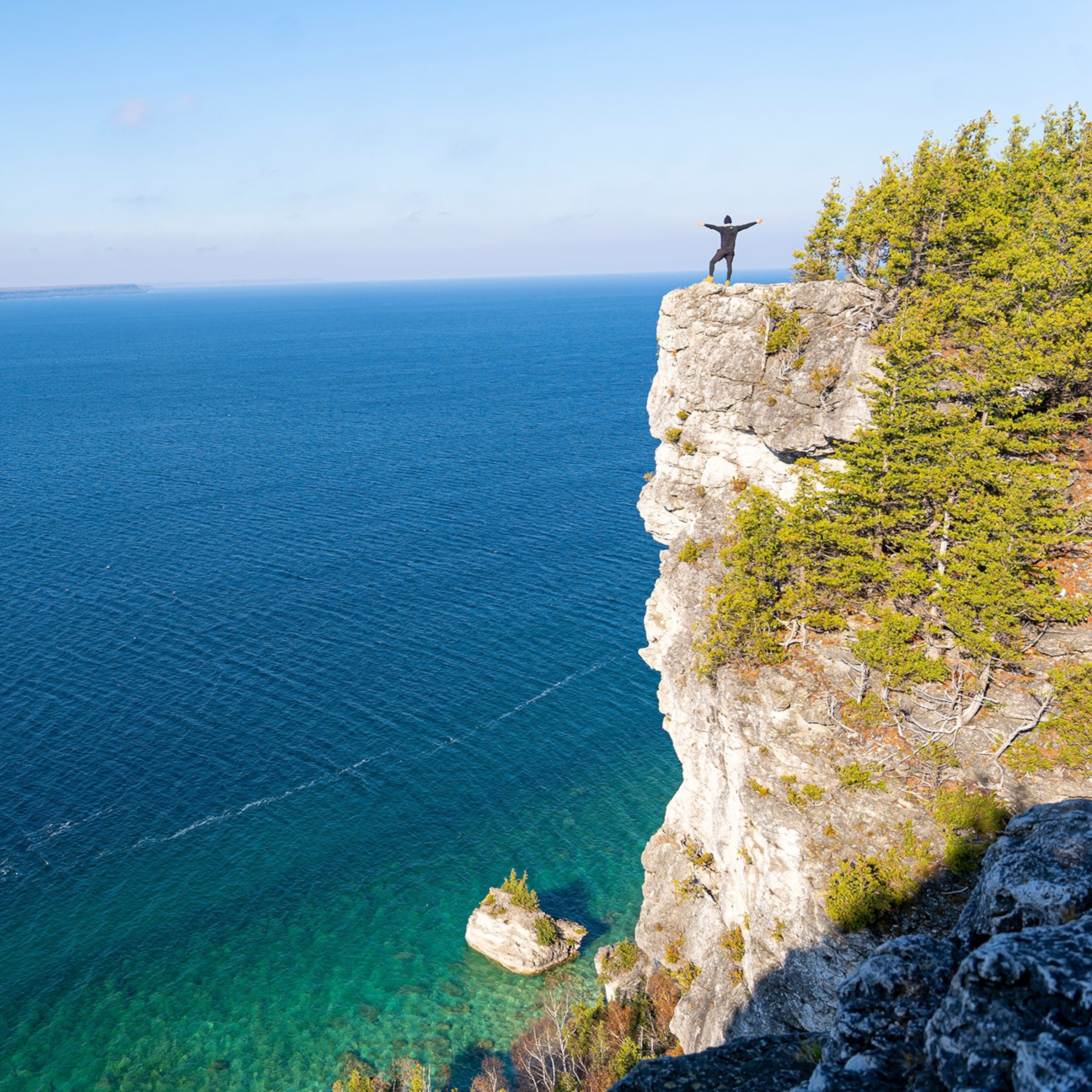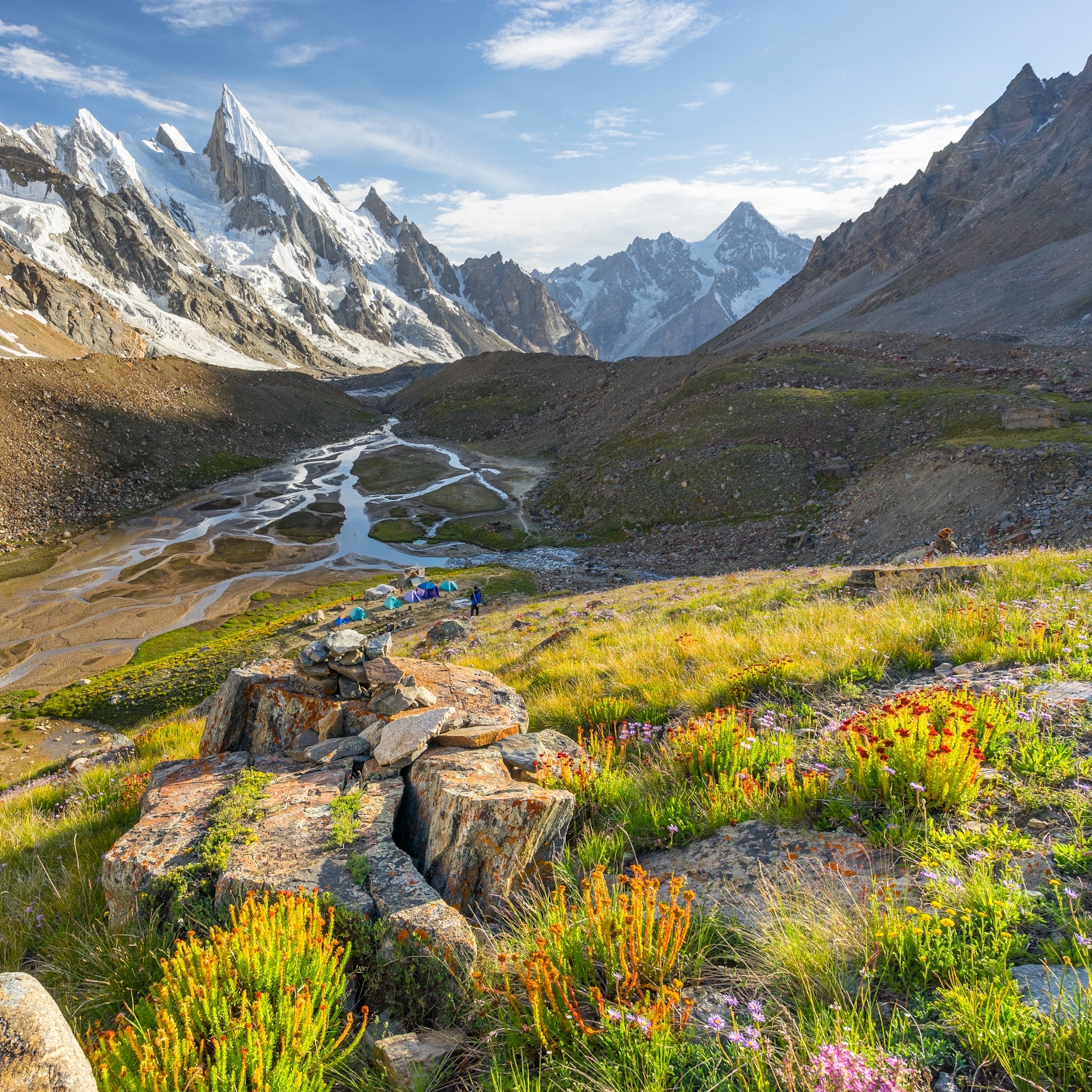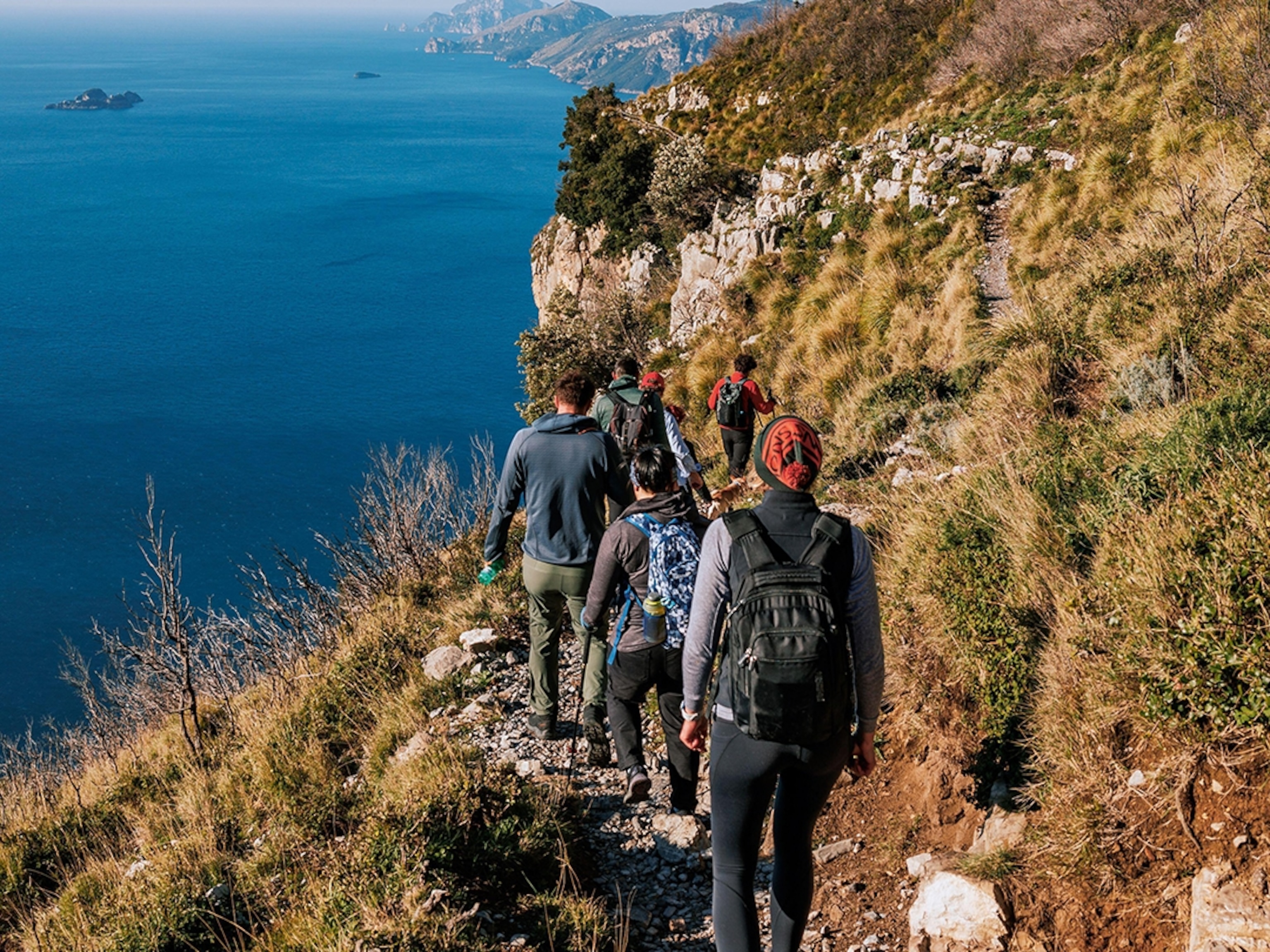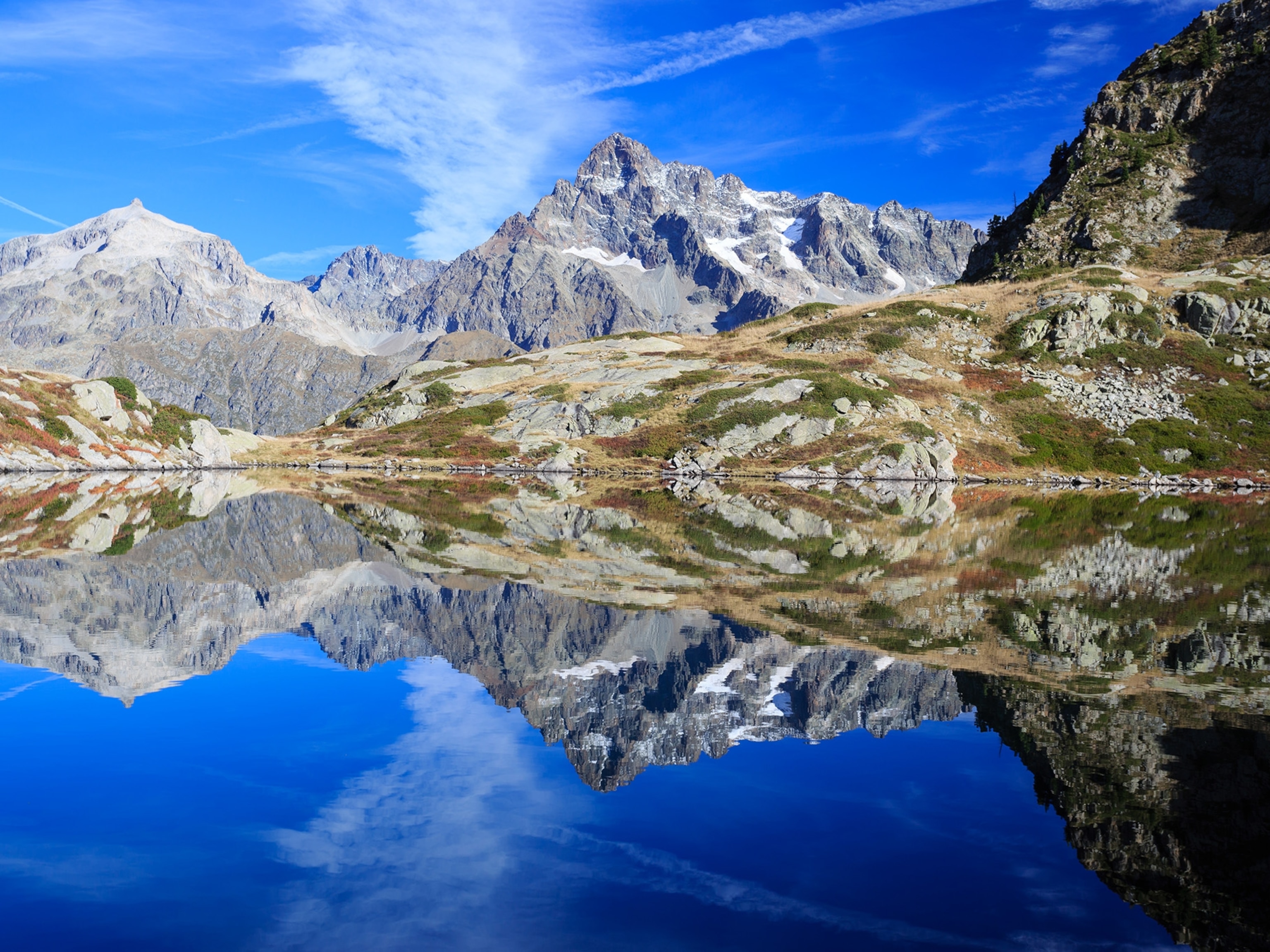
Hike Through 7 European Countries on this Epic Trail
The Via Dinarica is poised to become one of the world’s top trekking destinations.
Twenty years ago, the Balkans seemed an unlikely spot to go trekking. Torn apart by bitter conflict, Yugoslavia painfully splintered, and borders between the new republics were better known for acrimonious rifts than interconnecting trails. But now the region is coalescing around a trail network, the Via Dinarica, and is poised to become one of the top hiking destinations in the world.
The Via Dinarica knits together Slovenia, Croatia, Serbia, Bosnia and Herzegovina, Montenegro, Kosovo, and Albania (with Macedonia also eager to join the thread) along a 1,200-mile route that traces the spine of the Dinaric Alps through the Balkan Peninsula. Combining a network of old shepherd paths, strategic war routes, established trails, and new connections, it weaves through dramatic limestone karst fields, high mountains, steep valleys, dense beech forest, shimmering Alpine lakes, and the Tara River Canyon, Europe’s deepest, which plunges 4,300 feet.
Strategically wedged between Asia and Western Europe, the Balkans are a historical crossroads. Along the Via Dinarica, shepherd houses share hillsides with war memorials, medieval gravestones, stone fortresses, and crumbling foundations—remnants of Illyrians, Romans, Slavs, Ottomans, Austro-Hungarians, and Serb kingdoms. In their wake, Orthodox monasteries, Muslim mosques, and Catholic churches now stand as a testament to the multicultural influences in the region.
For travelers, the Via Dinarica offers off-the-beaten track adventure. For this complicated region, the trail offers hope.
Trekking the Via Dinarica
I recently sampled the Via Dinarica in four countries: Croatia, Bosnia and Herzegovina, Montenegro, and Kosovo. I thought five weeks would satisfy my appetite, but the more I saw of this southeastern Europe, the more I wanted to explore. What lingers in my memory is not just the scenery, which rivaled any I’ve seen, but also the people who welcomed me along the trail.
Croatia: My first taste of the Via Dinarica was along Vihoraški put, a stretch of trail about an hour and a half from Zagreb that scrambles up and down pointy fingers of limestone—talk about discovering the hidden side of Croatia. We trekked for eight hours through a cathedral of white rock and didn’t see another soul all day. I wish we could have stayed overnight at Ratkovo sklonište (Ratko’s shelter), a simple backcountry hut that’s built into a cave. But alas, our plans were just for the day.
Bosnia to Montenegro: The cross-border route from Sutjeska National Park in Bosnia to Durmitor National Park (a UNESCO World Heritage site) in Montenegro was one of the first established stretches of the Via Dinarica and is touted as one of the most beautiful sections of the Dinaric Alps.
Packs loaded, we drove up a bumpy dirt road as far as the car would go and then set out on a steep trail that climbed through a leafy forest alive with the calls of cuckoo birds. It wasn’t long before we emerged in a lumpy pasture dotted with bright yellow, blue, and white spring blooms. Around me, craggy limestone outcroppings led up the flanks of green peaks.
We crossed the meadow and stopped at a shepherd’s house for a chat, the jovial laughter of three men welcoming us inside. The owner no longer tends livestock in the summer. Instead, he earns cash by hosting trekkers. We crowded into the small kitchen around a low table, and before I knew it, we were washing down sausages and home-cured meats with rakia, the local brandy that families distill in their backyard. It was a scene that repeated itself during my trip through the Balkans.
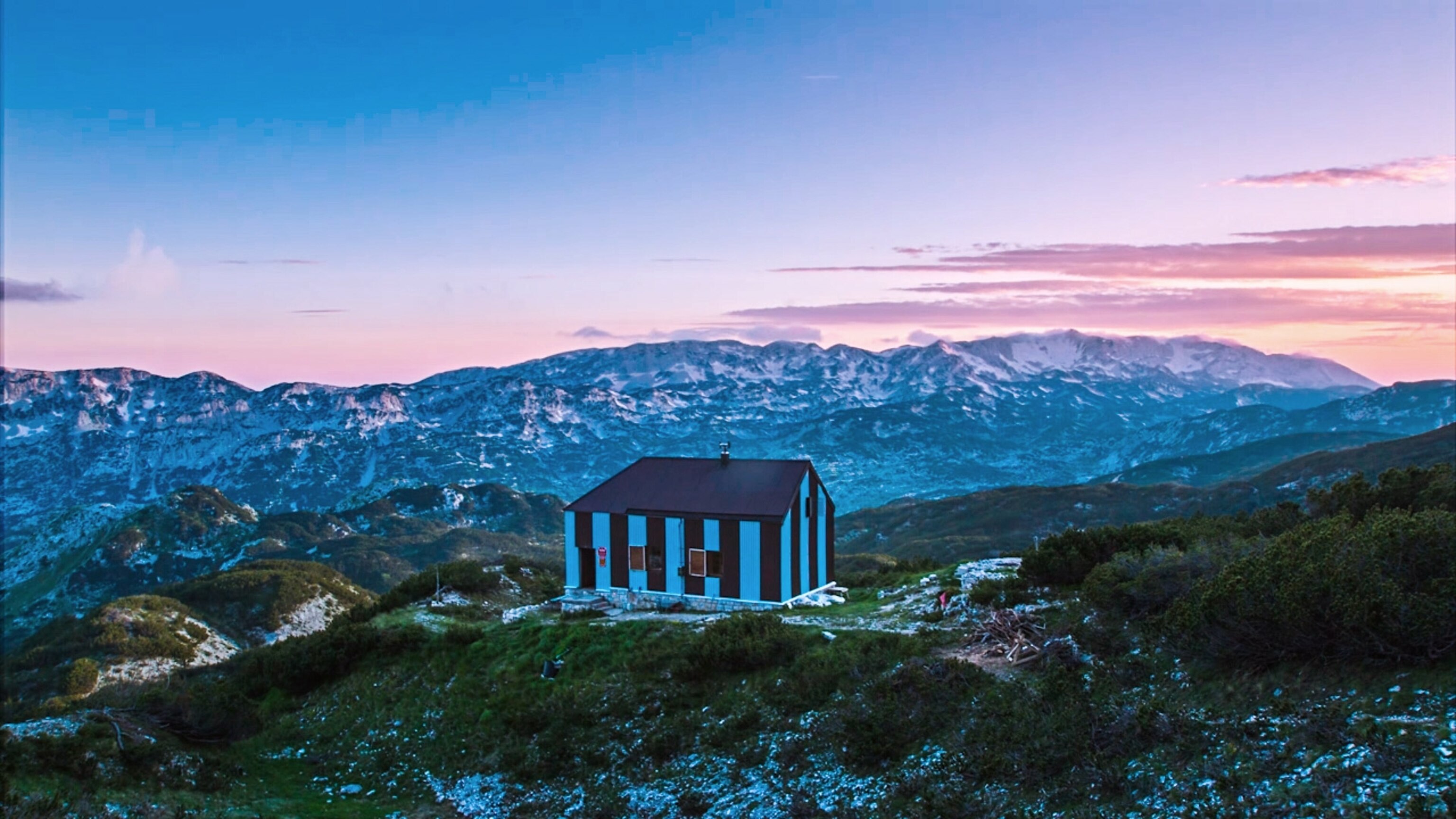
We hiked for several more hours before stopping at a backcountry hut run by the national park. You have to call ahead for the key to the basic log structure, which has no running water or electricity, but it had everything we needed to rest for the night.
As we continued into Montenegro, I was stunned by the natural beauty as I peered into the depths of Tara Canyon. “Montenegro has the biggest of everything,” our Black Mountain guide, Janko Gardovic, says. “The biggest lake, the biggest mountains, the biggest canyons.” Heavy clouds hung low and obscured our view of the high peaks, leaving me hungry for more. I’ll be back, I reminded myself. Montenegro is a gem that begs to be explored.
Kosovo: The moment I crossed the border into Kosovo, something felt different. A smattering of bullet-riddled buildings and potholed roads reminded me that this country has been independent since just 2008. Nevertheless, people greeted me with smiles. Downtown Peja’s lively pedestrian district bustled with families, parents pushing strollers, businessmen meeting over coffee, and workers rebuilding streets.
We trekked for five days, spending one night in a shepherd’s home. Our host, Zeki Ahmetgjekaj, cooked us an elaborate feast—peppers soaked in a creamy sauce, and roasted chicken with salad and rice. We warmed ourselves by the wood stove and shared photos with his 72-year-old father, who climbed Kosovo’s highest peak just last year. He spoke no English, but the common language of mountaineering prevailed. He pointed out a three-dimensional map hanging on the door. I ran my fingers over Albania’s peaks and realized there was so much more of this region to see.
My last day came too soon, when we aimed for Kosovo’s highest peak: 8,700-foot Gjeravica. Just as we started hiking from a small village, a group of eight young Kosovar men—19-year-olds—decided to tag along. Lighthearted and curious, they practiced their English as we climbed the steep trail through mountain meadows, up rocky escarpments, and past a frozen Alpine lake. Thirty minutes from the summit, a monster storm rolled in, rattling the sky with thunder and dumping pea-size hail. All 10 of us crammed into a tiny rock bivouac to seek shelter. We were separated by age, nationality, religion, and more, yet huddled under that rock, we were all just people laughing while we waited out a storm. Our plans to summit were foiled, but I’m pretty sure I’ll remember the time spent with my new friends better than any high view.
How to Do This Trip
At the moment, the Via Dinarica’s trails and accommodations lack the polish of other popular places in Europe. But the rustic, authentic character enhances its charm. Get ahead of the curve and go now while it’s still an undiscovered frontier.
- National Geographic Expeditions
When to Go: Trekking season starts in late May or early June (depending on snow) and extends until October. July and August can be very hot. June and September are the best times.
What to Bring: Carry a backpack with clothing, food, and a sleeping bag. Weather can be fierce, so be prepared to be hot, cold, and wet at times. Accommodations along the route range from basic huts with no electricity or running water, to local bed-and-breakfasts that offer authentic cultural experiences, to hotels with restaurants and full bars. In many cases booking ahead is required to ensure doors are open when you arrive.
How to Plan: If you’re set on a do-it-yourself approach, study the routes on the Via Dinarica website, bring a GPS, and prepare to bushwhack and get lost here and there. The full route will take several months, so you might want to home in on one country or region that holds particular appeal. It’s easy to dabble for a week or two.
For help with logistics or to sign up for a guided tour, contact one of the Via Dinarica Alliance tour operator partners, who are collaborating to design seamless experiences across country borders.
Avery Stonich is a freelance writer based in Boulder, Colorado, who has traveled to more than 50 countries in search of adventure. Visit her website at averystonich.com and follow her on Twitter and Instagram.
